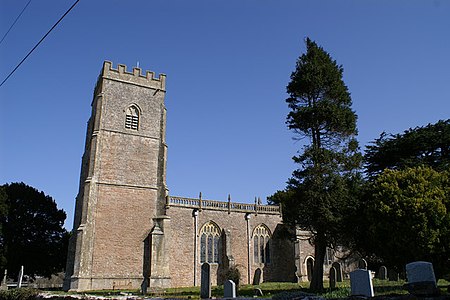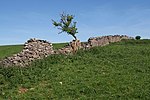Rodney Stoke
Civil parishes in SomersetMendip HillsVillages in Mendip District

Rodney Stoke is a small village and civil parish, located at grid reference ST486501, 5 miles north-west of Wells, in the English county of Somerset. The village is on the A371 between Draycott and Westbury-sub-Mendip. The parish includes the larger village of Draycott. South of the A371 the parish includes an area of the Somerset Levels, extending to the River Axe. North of the A371 the southern slopes of the Mendip Hills rise to an area of the parish on the Mendip plateau. The parish is therefore an area of high biodiversity supporting local rare species of plants and animal life.
Excerpt from the Wikipedia article Rodney Stoke (License: CC BY-SA 3.0, Authors, Images).Rodney Stoke
Scadden's Lane, Mendip
Geographical coordinates (GPS) Address Nearby Places Show on map
Geographical coordinates (GPS)
| Latitude | Longitude |
|---|---|
| N 51.2476 ° | E -2.7357 ° |
Address
Scadden's Lane
Scadden's Lane
BS27 3UR Mendip
England, United Kingdom
Open on Google Maps







